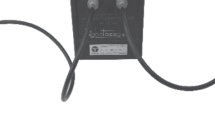A procedure and results of studies conducted by the N. M. Gersevanov Scientific-Research Institute of Foundations and Underground Structures to evaluate the uniformity and quality of concrete in experimental barrette foundations on the ODTs project “Okhta” are described. The curves obtained for the dependence of the strength of concrete on depth made it possible to assess the uniformity of the concrete in the barrette foundations, and obtain verified assessments of the strength class of the concrete.
Similar content being viewed by others
References
V. P. Petrukhin, O. A. Shulyat’ev, I. A. Bokov, and S. O. Shulyat’ev, “Characteristics of pile tests for high-rise buildings as exemplified by the ODTs “Okhta” tower, Vysotnye Zdaniya, No. 6, 96–99 (2011).
J. O. Osterberg, The Osterberg load test method for bored and driven piles − the first 10 years, Proc. of the Seventh Int. Conf. Exhibition on Piling and Deep Foundations, Deep Foundation Institute, Vienna (1998), pp. 1.28.1–1.28.11.
Building Code 50-102-2003. Design and Installation of Pile Foundations [in Russian].
ASTM Standard D 5882 (2000): Standard Test Method for Low Strain Impact Integrity Testing of Deep Foundations, ASTM International, West Conshohocken, PA, www.ast.org.
ASTM Standard D 6760-08 (2008): Standard Test Method for Integrity Testing of Concrete in Deep Foundations by Ultrasonic Crosshole Testing, ASTM International, West Conshohocken, PA, www.astm.org.
AFNOR Association Francaise de Normalisation: NF P94-160 - 1 Auscaltation d’un element de foundation, Partie 1: Methode par Transparence, Paris (2000).
Guidebook on Non-destructive Testing of Concrete Structures, International Atomic Energy Agency, Vienna (2002).
GOST P 53231-2008. Concretes. Rules for Strength Monitoring and Evaluation [in Russian].
GOST 17624-87. Concretes. Ultrasonic Methods of Strength Determination [in Russian].
Institutional Construction Regulation 05-64. Glavtekhstroiproekt. Recommendations for Consideration of Effect of Concrete Age on Its Basic Mechanical Properties [in Russian], Moscow (1963).
S. S. Ferraro, Advanced non-destructive monitoring and evaluation of damage in concrete, PhD Thesis, University of Florida (2003).
I. Soroka, “An application of statistical procedures to quality control of concrete,” Mater. Struct., 1, No. 5, 437–441 (1968).
Author information
Authors and Affiliations
Additional information
Translated from Osnovaniya, Fundamenty i Mekhanika Gruntov, No. 4, pp. 6-11, July-August, 2012.
Rights and permissions
About this article
Cite this article
Sheinin, V.I., Dzagov, A.M., Blokhin, D.I. et al. Use of ultrasonic-test data for quality and strength evaluation of concrete. Soil Mech Found Eng 49, 124–131 (2012). https://doi.org/10.1007/s11204-012-9179-3
Published:
Issue Date:
DOI: https://doi.org/10.1007/s11204-012-9179-3




